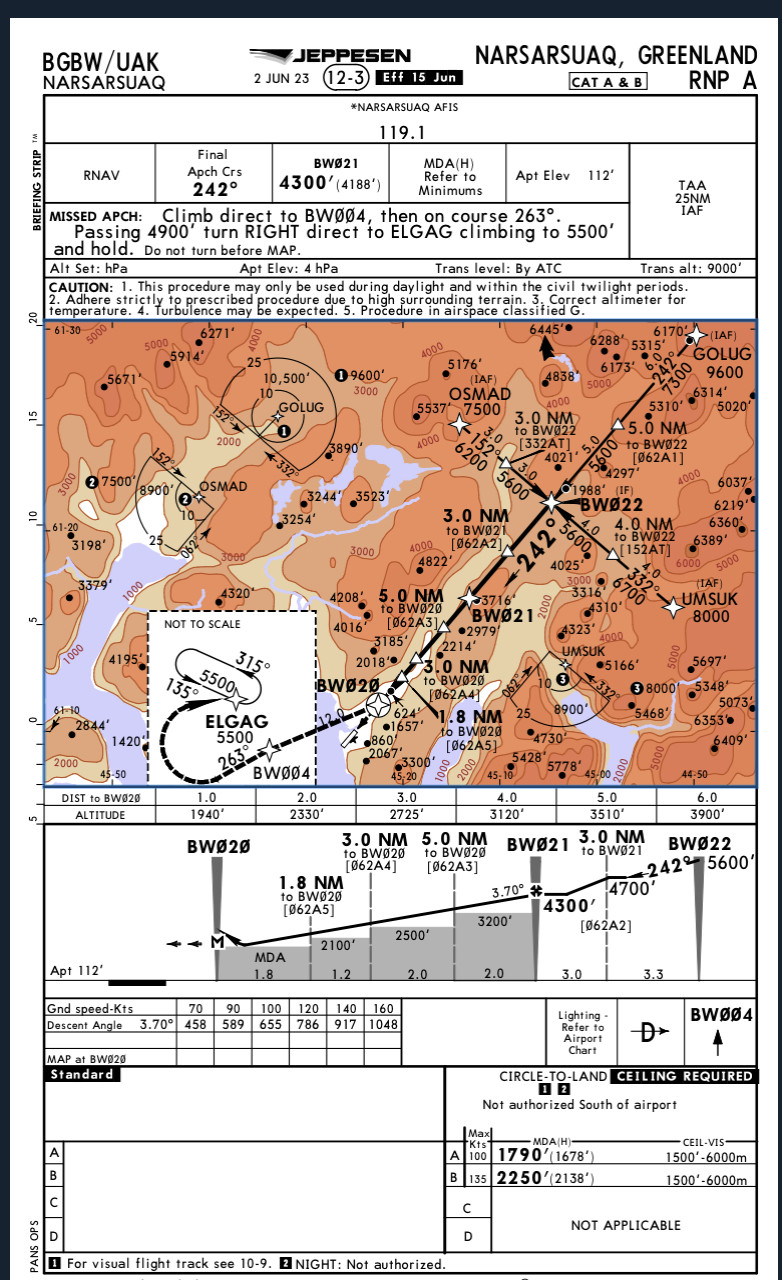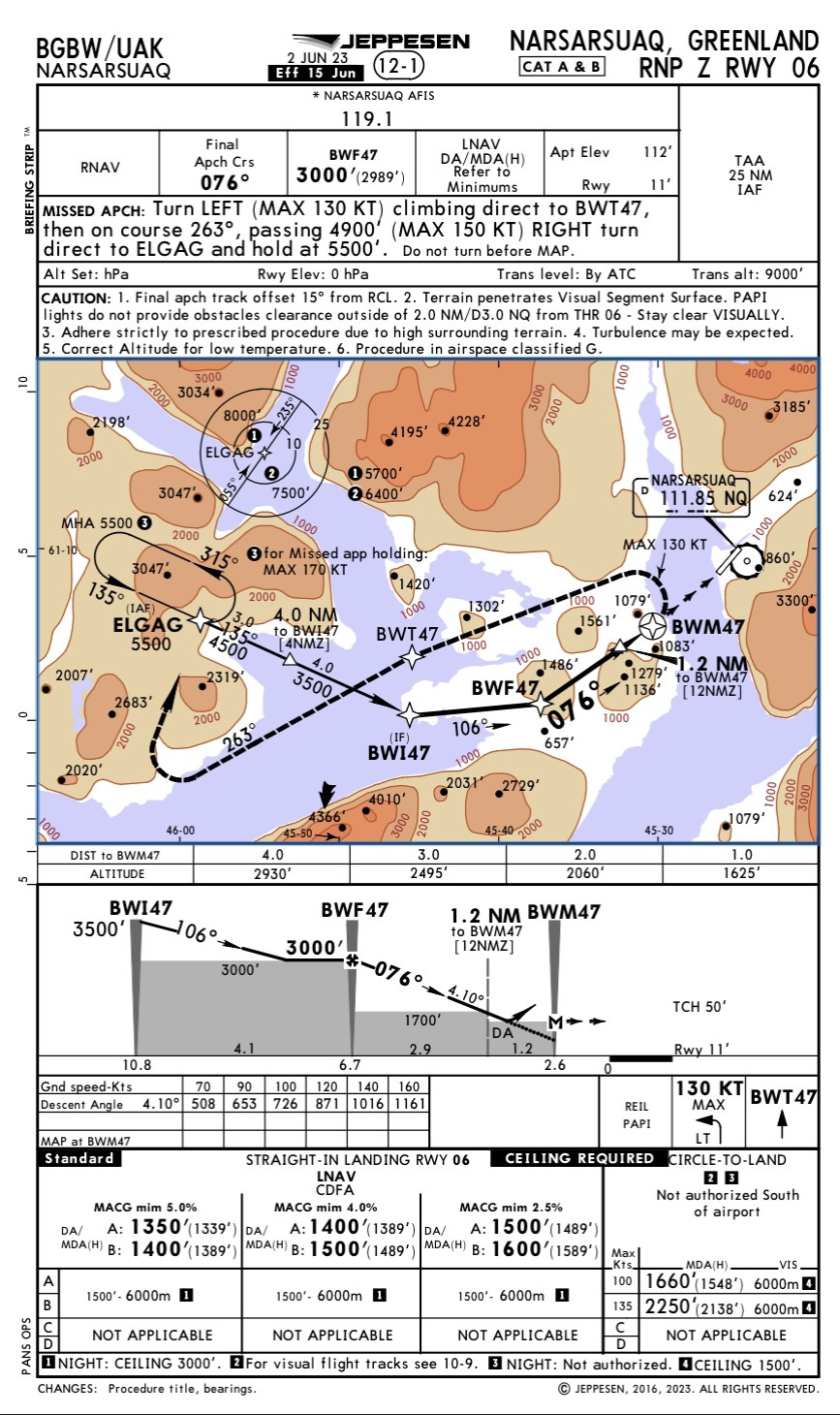Good afternoon folks. I am a bit confused and trying to find the right answer. This is what we have:
Why do we have here minimum for straight-in approach even though the descent angle is 4.1 degrees? If we convert it to percentages it becomes around 7.2% with the groundspeed of 100 knots. According
According to ICAO Doc 8168, all non-precision approaches with the gradient more than 6.5 percent for a non-precision approach for Cat A and B aircraft are considered as circle to land only. If we take a look at BGBW RNP A , it has a descent angle of 3.7 degrees, but if we measure the distance from FAF to the THR RW24 it becomes around 8.3% and now it makes sense why it’s impossible to apply straight-in minimums for RW24.
BGBW RNPZ 06]1 For reference, this is RNP A plate for BGBW:


